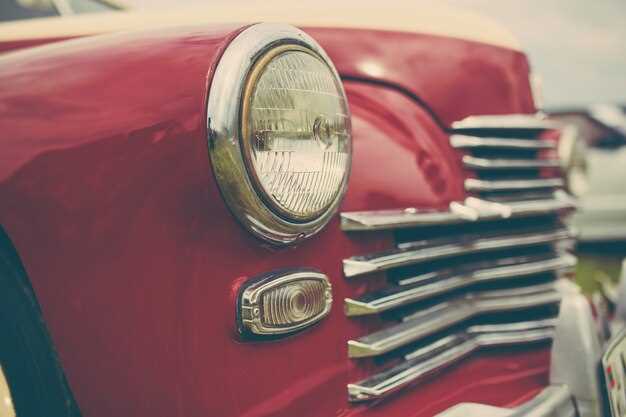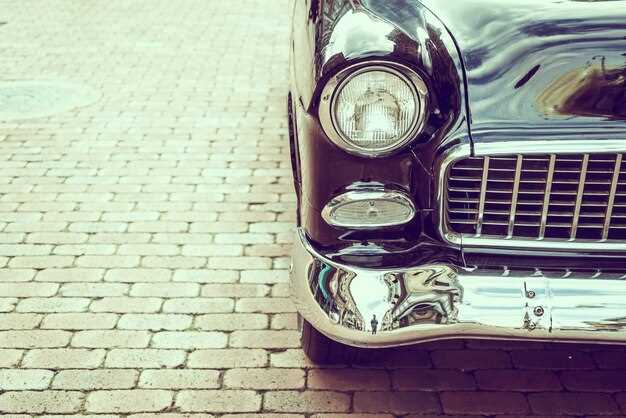
Collecting classic cars is not merely a hobby; it is a passionate pursuit that combines history, craftsmanship, and the thrill of acquisition. As more enthusiasts seek to preserve the iconic vehicles of the past, the classic car market has transformed into a captivating blend of investment opportunity and nostalgic enjoyment. This guide aims to provide comprehensive insights for both novices and seasoned collectors on how to build a classic car collection that reflects personal taste while also holding long-term value.
Understanding the intricacies of classic car collecting starts with defining your goals. Are you interested in particular brands, models, or eras? Do you envision your collection as an investment, or is it grounded in a love for automotive design? Clearly outlining your objectives will help you navigate the vast landscape of available vehicles and identify the right purchases. Assessing market trends, understanding the nuances of different models, and staying updated with auctions are essential to making informed decisions.
Beyond the heart of personal preference lies the crucial aspect of condition and provenance. Each classic car comes with its own story, and the history behind a vehicle can significantly influence its appeal and value. Learning how to evaluate the condition of a car, from body work to engine performance, ensures that your investments are sound and rewarding. By combining informed judgment with a strategic approach, you can build a collection that is not only personally satisfying but also advantageous from a financial perspective.
Choosing the Right Classic Cars for Your Collection
Selecting the ideal classic cars for your collection requires careful consideration of several key factors. First, determine your budget. Classic cars can range dramatically in price, so establish a clear financial limit to guide your choices.
Next, consider your personal preferences regarding brands, models, and eras. Focus on cars that resonate with you, whether it’s a vintage Ford Mustang, a sleek Jaguar E-Type, or a charming Volkswagen Beetle. Each car has its unique story, and aligning your collection with your interests will enhance your enjoyment.
Research the market trends for classic cars. Certain models appreciate quicker than others due to rarity, historical significance, or cultural impact. Stay informed about which vehicles are gaining popularity among collectors and assess any potential for future value growth.
Another important aspect is the condition of the vehicles. Decide whether you prefer fully restored cars or original ones in need of restoration. Each choice presents different challenges and rewards, so ensure you have the resources and expertise to maintain or restore your selected cars.
Additionally, consider the purpose of your collection. Are you looking to display your cars, participate in shows, or drive them regularly? Understanding your goals will help narrow down your choices significantly and guide your selection towards cars that fit your intended use.
Lastly, network with other collectors and attend classic car shows or auctions. Engaging with the community can provide insights, recommendations, and opportunities to access unique offerings. Building relationships can also lead to valuable advice on maintaining and appreciating your chosen classic cars.
Restoration Tips for Maintaining Your Classic Cars

Restoring a classic car requires dedication and attention to detail. Proper maintenance is crucial to ensure its longevity and enhance its value. The following tips will help you maintain your classic cars effectively.
Regular Inspections
- Check fluid levels regularly: oil, coolant, brake, and transmission fluids should be monitored and maintained.
- Inspect tires for wear and pressure. Rotate tires as necessary to promote even wear.
- Examine belts and hoses for signs of wear, cracking, or fraying.
Cleaning and Detailing

- Wash the exterior frequently with a mild soap and water to remove dirt and grime.
- Wax the car every few months to protect the paint and enhance the shine.
- Clean the interior regularly, including upholstery and carpets, to avoid deterioration.
Engine Maintenance
- Change the oil and oil filter according to the manufacturer’s recommendations.
- Keep the cooling system in good condition by flushing it periodically and replacing the coolant.
- Inspect the ignition system, including spark plugs and wires, to ensure optimal performance.
Rust Prevention
- Store your classic car in a climate-controlled environment to prevent moisture-related damage.
- Apply rust-proofing treatments on vulnerable areas to shield against corrosion.
- Regularly inspect the undercarriage for rust, especially after winter driving.
Documentation and Planning
- Keep a detailed record of all maintenance and repairs performed.
- Develop a restoration plan that outlines objectives, budget, and timeline.
- Research and source original parts, as authenticity can increase the car’s value.
Professional Assistance
- Consult with experts when tackling complex repairs or restorations.
- Join classic car clubs to share knowledge and learn from experienced enthusiasts.
By following these restoration tips, you will not only maintain your classic vehicles but also improve their performance and preserve their value over time.
Understanding Insurance and Valuation for Classic Car Owners
Owning a classic car entails responsibilities that extend beyond mere enjoyment. One of the critical aspects is understanding insurance and proper valuation, which are essential for protecting your investment.
Classic car insurance differs significantly from regular auto insurance policies. Standard policies may not account for the unique aspects of vintage vehicles, such as restoration quality, historical significance, and rarity. Therefore, seeking coverage from specialized insurers that cater specifically to classic or collector cars is advisable. These companies often provide agreed value coverage, which guarantees a predetermined amount in case of total loss, unlike regular policies that may only cover the actual cash value, often resulting in lower payouts.
When determining the value of a classic car, several factors come into play. Firstly, provenance plays a significant role; documentation regarding the car’s history, previous ownership, and any restoration work can enhance its value. Condition is another critical factor; vehicles in excellent condition or those with successful restorations typically command higher prices. Additionally, rarity greatly influences valuation–limited production models or those with unique features tend to be more sought after by collectors.
Regular appraisals are essential to ensure that your insurance coverage remains adequate as your classic car appreciates in value. Engaging a certified appraiser familiar with the classic car market can help you obtain an accurate assessment. Documentation from the appraisal will be valuable for your insurance provider, ensuring appropriate coverage and safeguarding against underinsurance.
Another aspect to consider is the insurance policy specifics regarding usage. Most classic car policies limit the mileage and intended use, often restricting driving to shows, parades, or occasional leisure driving. Understanding these limitations will help in adhering to the terms of the policy and maintaining coverage.
Finally, staying informed about market trends can guide owners in both valuation and insurance needs. The classic car market fluctuates over time, with some models gaining in popularity and others experiencing declines. By keeping abreast of these changes, owners can proactively adjust their insurance and valuation strategies, ensuring optimal protection and investment growth.
